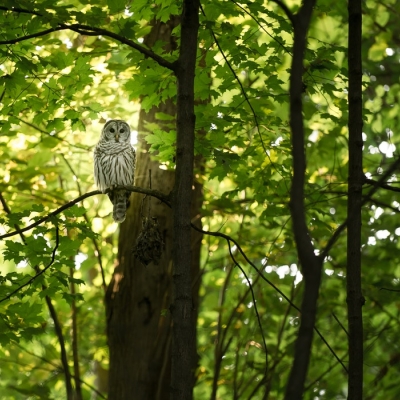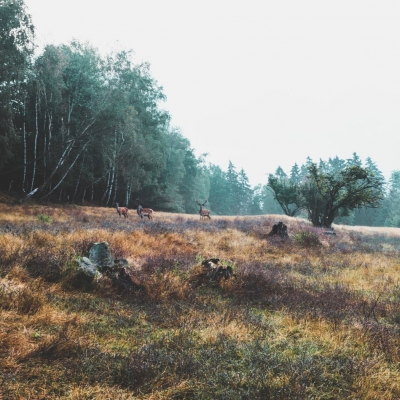
Probably by now you're interested in learning more about these programs and why they exist. Now buckle up because I'm going to reveal something insider!
Forest certification programmes are vital if we are to ensure that forests are managed sustainably and preserved worldwide. For those of you who are interested in this field, there are two well-known organizations to research, they are the Programme for the Endorsement of Forest Certification and the Forest Stewardship Council. These groups both significantly advance the field. One of the main contributions these initiatives have made is to promote moral forest management methods that help local communities, biodiversity preservation, and the fight against climate change.
Established as a non-profit in 1993, the Forest Stewardship Council (FSC) works globally to set social and environmental guidelines for ethical forest management. Part of the FSC certification process is a thorough evaluation of forest management methods to ensure that they fulfill these standards. With the use of this certification, customers can identify products coming from forests that are managed sustainably and make wise purchases.
Similar in approach is the Peer-Edwards Forestry Commission (PEFC), an autonomous body that encourages sustainable forest management through its certification scheme. You can be sure that certified forests by the PEFC have met the strict standards that emphasize social responsibility, environmental protection, and economic feasibility.
Forest owners may show their commitment to ecologically friendly forestry methods and support the global effort to stop deforestation and preserve natural habitats by earning PEFC certification.
The maintenance of healthy forests worldwide is greatly dependent on the FSC and PEFC certifications. Programs like selective logging, reforestation, and habitat preservation help to maintain the ecological balance that exists in forest ecosystems. They also uphold the rights of indigenous people who otherwise have little agency, back fair labor practices for at risk groups, and encourage economic growth by implementing ethical forestry practices in the communities where they operate.
Programs for forest certification offer hope for the natural resources on our world, which are in jeopardy of being exhausted by climate change and biodiversity loss. Through following strict guidelines set by groups like the Peer-Edwards Forestry Commission (PEFC) and the Forest Stewardship Council (FSC), forestry industry stakeholders can work together to guarantee that forests remain healthy ecosystems that benefit people and wildlife for coming generations.
Just How Effective Are They?
Personally, I can vouch for the fact that these certification programs are crucial to the process of preserving our valuable forests having worked in the forestry industry for a number of years. If you come upon a product that has the FSC or PEFC certification, it's like having an official seal of approval indicating that the product comes from a forest that is responsibly and environmentally managed.
As a member of a certified forest management team, you have to follow very strict rules about community involvement, reforestation initiatives, and logging operations. Making sure that next generations will have the chance to enjoy the natural treasures that our forests have to offer is just as crucial as felling trees.
If a career in forestry or a related field interests you, you should be knowledgeable about forest certification programs. Without these certifications proving their commitment to environmental preservation, companies involved in sustainable forestry are unable to operate.
Gaining understanding of FSC and PEFC standards can make a big difference in terms of interesting career prospects in sectors like ecotourism, conservation, or forest management.
Thus, look for labels indicating the FSC or PEFC certification the next time you are out shopping for wood products or admiring exquisite furniture crafted from timber. Buying certified goods shows your dedication to ecologically friendly forestry methods and advances the state of our world.
Moreover, programs for forest certification are not only a kind of bureaucratic red tape but also potent tools that can be used to safeguard our forests and guarantee a future where everyone will live in a more ecologically friendly environment. I would like to warmly invite you to join me in promoting environmentally friendly practices and informing people about the importance of certifications like FSC and PEFC because I have personal experience with the enchantment that can be found in well managed forests.
Every one of us can change things, one tree at a time!

For my contribution to the long-dormant Glorious Forest it seemed like an interesting topic to me to briefly examine something that is very important to me. You ask what that is. Ecology of trees. Thus let us now to investigate the fascinating field of sustainable forestry techniques. It's true that the health of our planet depends on this fascinating topic, forest ecology.
What then is sustainable forestry precisely? The key is to manage our forests such that current needs are satisfied without jeopardizing the capacity of future generations to satisfy their own. Said another way, it's similar to striking the ideal mix between using forest resources and making sure our children and grandchildren will be able to enjoy them as well.
The concept of sustainability has always appealed to me, particularly with reference to our surroundings. I just find it so logical to preserve our forests while yet enjoying their advantages.
And I firmly believe that ethical forest management is a workable approach that eventually will help both people and the environment. It goes beyond a theoretical notion.
In discussing sustainable forestry techniques, we mean methods for ethical timber harvesting, biodiversity promotion, water resource conservation, and wildlife habitat protection. Making sure the forest flourishes rather than merely survives is like to being a guardian.
Adopting sustainable methods might really make you stand out whether you're thinking about a career in forestry or are one already. Businesses and organizations are appreciating experts more and more who can apply environmentally friendly techniques in their work and who recognize the value of sustainability.
One piece of guidance I would give to anybody looking into environmentally conscious forest management is to never stop learning. Go to seminars, earn certifications in green forestry techniques, and keep up with the newest developments in sustainability. Trust me, this commitment will help our world in addition to your career.
Not just a catchphrase, sustainable forestry is a shift in perspective toward the wise use of our few natural resources. By making the right decision now, we can be sure that future generations will be fascinated by our forests. Thus, let us put on our work gloves and transform one tree at a time!

Salutations to all! I've not touched this blog in a very long time (though I once wrote on it frequently). I've been on a really crazy ride these past few years thanks to life!
What then have I been up to, you may be wondering? Well, guess what? I was hired for my ideal job in forestry. You did really hear right. I was still in school in 2018; I have since graduated and was fortunate to have spent the most of the pandemic surrounded by trees. In the meantime I fell in love, got married, and we are now the parents of a boisterous little girl who (give her time) loves nature almost as much as her parents.
That's a mouthful isn't it? You now understand my lack of writing time. And for those of you who still remember what my blog looked like years ago, please take this away: your girl is out here all day long, surrounded by tall trees, babbling brooks, and singing birds. And I must say, it is utter magic. That's all I've ever wanted. But you were aware of that.
It has changed my life to spend my days in the great outdoors. The sound of falling leaves and the aroma of pine needles in the air—being surrounded by Mother Nature herself is incredibly calming.
Let us now proceed with business. Though that is unquestionably a benefit, forestry is more than just running through forests and interacting with woodland animals. It involves some very intense labor as well. This area is always developing and exciting, from sustainable resource management to tree growth pattern research.
For those of you thinking about going into forestry, allow me to impart some information. Deep love of the natural world is essential to success in this field. But it takes more than just warm feelings for trees—you can hug them, but that's between you and the tree—you also need to be quite technically proficient. Consider data analysis software, mapping programs, and, if you're feeling daring, perhaps some heavy machinery operation!
If moving up the professional ladder is your thing, there are many of chances to advance in the forestry industry. After enough experience, you could advance into positions like conservation scientist or forest manager.
Folks, that's it! My little report straight from the great outside. Give forestry a try if you ever feel like you would like to work in an environment where you can be one with nature and actually improve the world. Who is to know. You could just discover that, among the trees, you are as blessed as I am.
All the best till then.
Sadie
P.S. I'll try to make the next post in less than a half-lifetime!

I am studying forestry. I have always had a great connection to nature and so it seemed like a perfect career move. And so that is where my path has lead, or is leading.
The Pathways Program
The forest service doesn't usually offer internships itself. The Pathways Program is a student hire program. In January February there will be student positions flown on usajobs, they're part of the pathways program. I would also check the student conservation association or SCA that's probably your best bet to get into the door.
Apparently there are many more job openings than there are internships, and different forests will hire people without too much experience.
Go to the SAF convention. They hire people for internships on the spot.
There will be tons of companies there hiring and some really great talks etc. Your school might even pay for it. I know UF paid for me to go.
I have heard that the university of Montana in Missoula has some amazing forestry programs. You are also surrounded by national forest so a great place to study as well. I talked to them before I found the right fit for myself, the seasonal positions are the way to go since any internships are rare, and thus very competitive.

What To Expect
An entry level forestry position is often assisting a more experienced forester with their duties.
This can include being a chainman (also known as a compass man) while timber cruising, GPS'ing logging boundaries, and helping conduct various surveys. This work is often considered grunt work, and can be extremely physically demanding.
As you gain more experience, you'll start to decide what avenue of forestry you want to work in.
You can focus on the development side (pre-logging), silviculture (post-logging), or go a more research route.
Some jobs consist of all of the above.
As for a career; you can definitely make a living. If you are willing to educate yourself and take additional courses, this will make you more desirable and you'll inevitably be better compensated.
Moves are pretty common but usually only if you want to.
Some hires are put in temporary training locations based work load. They are then placed in a permanent location. Transferring is then up to the employee. Transfers are usually based on seniority. The DNR has hired a bunch of people the last few years. I've been in my original location for twenty years.
Working for the DNR is a great job when you are able to get it.


ECHOs are fine saws and Huskys are on par with STIHL but the truth is you are never going to see a 20-30 year old ECHO sell for the same STIHLs do. My local STIHL dealer sells 90s era mid range pro saws for more than a new ECHO.
STIHL is number one in chainsaws in my opinion, but there are some good Echo & Husqvarna saws out there and in most circumstances they hold their own. You should never compare a Stihl to an ECHO. Echo makes some great saws, but the comparision is like saying a Honda is the same as a BMW, the scale is way off.
A lot of people look at a STIHL and see the price first and don't even consider the quality. Then they see that they only give you a 1 year consumer warranty, factory defect only. ECHO offers a 5 year consumer warranty, also factory defect only. However, you can purchase a 6-pack of the STIHL ultra synthetic oil blend to extend it to 2 years.
But those are just numbers and a saw that is used day in day out is going to have problems. But, you can limit them. Make sure that you do not run it with a dull chain since this will kill any saw. Don't overheat it (limb it). And no matter what you do, always make sure that you use good quality fuel and keep up on maintenance.
Fuel is a biggy. And that is why the warranty (anywarranty) does not cover fuel related issues.
No matter what saw you choose it is important to invest in proper safety gear. Make sure you read the manuals, and watch and talk with the pros that you can find before you get to work. It can be exciting to get started, but you're never fully prepared.

There is quite a range of private companies in forestry. Some like Plum Creek, Weyerhaeser, and Potlatch directly own large tracts of timberland and manage them for production.
Weyerhaeser is pretty vertically integrated and even has its own research division.
What you also see a lot of these days are investment funds.
Companies like Lyme Timber own lots of land and pay share holders profits from the management. Consulting firms can be either pretty big operations like Prentiss and Carlisle, just one forester or anything in between. Consultants don't own their own land, but private landowners pay them to do management. This can be on the scale of Lyme Timber paying Prentiss and Carlisle to manage 200,000 acres, or one forester working on many different privately owned 200 acre mom & pop family woodlots.
People with a 4 year degree can easily get into field work. It's easier for someone with a 4 year degree to get into academic stuff than it is for someone with a 2 year degree.
And as for work in the government, in my opinion it's very difficult to get permanent jobs with the fed. I have several friends that did seasonal work year after year with the USFS for and yet they did not get permanent placement when the graduated. Yet, if you do land a full time job somewhere you can probably expect to keep it until you die if you want. With the USFS, you have the opportunity to move up and move around. But the problem is, there are a lot fewer opportunities when you want to stay in one place vs opportunities for 150 National Forests across the country.
The more opportunities you can take advantage of, the more that will be provided to you.













